Written by Steph Florian
Stand Up Paddleboarding (aka SUP) is and continues to be the fastest growing water sport in the world. Historically, the Waikiki Beach Boys launched the sport in the 50s. Termed “Beach Boy Surfing,” the beach boys stood on big, sturdy surf boards and used long paddles to maneuver their way into the surf lineup to capture that epic Hawaiian surf shot or to aid students in learning how to catch a wave. Fifty plus years later, SUP made its way into the mainstream sports world and has become a popular, accessible sport for all ages, shapes and sizes.
What’s So Great About Stand Up Paddleboarding?
Just add water! Rivers, lakes, oceans, waves…if there is water you can add a paddleboard. First-timers should aim for a flat waterway or calm part of the day (early morning or late afternoon are ideal in oceans or coves).
It’s important to stay close to shore in order to build skills before branching into more difficult currents or ocean patterns. The beauty of SUP as a sport is that it caters to the general population because it is easy to learn once you know the basics. Anyone looking for a fun, family-friendly sport can expect a great core and cardio workout. Water also has the incredible power of calming the mind and soothing the soul – not to mention the scenery no matter what body of water you choose to paddleboard, be it salt or fresh.
Start by choosing a destination. Whether on vacation or at home in your own community, decide which beach or location you want to explore on your SUP adventure and then begin searching for a rental outfitter, preferably one that also offers lessons. SUP has grown so fast over the past few years that every water sport outfitting company will carry all the gear you need.
Since SUP gear is large and awkward to transport, you’ll want to ask the outfitters you investigate if they offer transportation (if they are not located right on the waterfront). Some companies will arrange to meet guests “on location” and will bring everything you need to get started. Board shorts, a bathing suit, anything quick dry are all ideal clothing options for Stand Up Paddleboarding in warmer climates. Once you venture into cooler water or off-season climates, be sure to spring for a wet/dry suit to stay warm and safe.
Board Selection
Like most board sports, the rule of thumb for first-timers choosing a board to consider is size and style. Bigger IS better as the more deck width the board has, the more stability and easier it is to balance your weight and stay standing. Outfitters will size a rental board according to height, weight and skill level.
A recreational, cruising SUP is the best choice and will vary in length between 10 and 12 feet. Beginner boards are wider and flatter in order to properly disperse weight over the board deck and are best suited for basic paddling excursions on calm water and close to shore.
SUPs are actually so large and stable that you can actually put a small child in a personal flotation device (PFD) at the nose of your board without any need for concern. As kids get bigger, they too can paddle their own board alongside an adult, thanks to new SUP board designs for kids, including inflatables!
Stand Up Paddleboarding has come a long way over recent years. There are a variety of board options for experienced paddlers, including race boards and touring boards (pointed nose and longer than a beginner board 12-feet to 14-feet long, with a long pointy nose for speed and efficiency). Surfing SUPs are similar to surf boards in that, the longer the board, the easier it is to paddle into the wave and surf (assuming you are surfing longboard waves and following rules of the line up).
Inflatables have grown in popularity since SUPs are so large and require a racking system for transportation. Inflatable boards make it easier and convenient to get a quiver of SUPs around town; they pack down into small compact units, inflate in less than five minutes and provide a nice, sturdy ride. SUP yoga boards and SUP hybrids are out there as well—if you’re looking for a board that will serve you more than one purpose and allow you to morph your sports as required. For example, on a calm flat sunset paddle, you may decide to anchor down and practice a few water warrior sun salutations or kayak/surf your way back to shore. These boards offer options for paddlers looking to take the sport further than a recreational excursion.
The Paddle
Unlike surfing, Stand Up Paddleboading requires a paddle to enable you to steer and maneuver while standing on two feet. The shape of a SUP paddle is long (approximately 10 to 20cm or six to eight inches taller than your height) and is structured with an angle in the shaft providing the basis for a more efficient stroke. The shape and length of the paddle, in combination with the size and width of the board together create a stellar balancing system for you, the paddler.
What to Wear
Both the U.S. and Canadian Coast Guards require a PFD or life jacket because SUP is categorized as a vessel (like a boat). Even strong swimmers and paddlers should wear a PFD, as Stand Up Paddleboarders share waterways with bigger vessels and motorized boats. Remember, if you get caught in a current or in a busy boat stream, it’s difficult for larger vessels to see you. Stay close to shore and wear your PFD.
Loose Comfortable Clothing: If you’re lucky enough to be SUPing in tropical waterways, not only is the rest of the world jealous but the clothing requirement is minimal. A swimsuit is required and a rash guard is recommended (more for sun protection than anything else). The reflection of the sun on top of the water is intense and proper sun protection is imperative—even on cloudy days. Be sure to wear waterproof SPF, a hat and sunglasses.
In summer months, depending on the climate, swim attire is an option. Do remember that ocean water is much colder than fresh water, so layers are always a good choice. Since SUP boards are wide and flat, it’s easy to pack a few extras, including sun protection, snacks, water and layers. SUP apparel options are growing rapidly—even Lululemon has recently launched a new SUP line. Comfort and flexibility are optimal when choosing what to wear on the water. Keep it light and water-friendly. Board shorts, quick dry and anything with water-wicking technical stretch material will allow for better arm movement and less bulk.
Before you can learn how to use a SUP, it’s important to understand board terminology. The board’s edges or sides are called “rails.” The front or tip is the “nose” and the back or end is called the “tail.” Under the tail, in the water is the “fin” and serves to keep the board stable.
Depending on the board’s design, it may have up to three fins locked into a fin box, which can be unscrewed and removed for transportation. The main standing area on a SUP is called the “deck” with a traction pad for grip and comfort purposes—since you will be on your feet paddling the board and wax is not used. In the middle of the board is a hole that acts as a handle in order to carry your board from water to land.
Attached to the deck near the tail of the board is the leash, which attaches the board to your lower leg via a large Velcro strap. The leash serves as a safety strap and easily allows a paddler to remain attached to their board and able to remount after a fall. Foam boards have a vent plug that allows excess expansion due to gases from the foam to be released and equalized during storage. This is something you will want to discuss with a retailer, if you are looking into purchasing your own SUP down the road.
Carrying
Since SUP boards are larger and heavier than surfboards, they are designed with a user-friendly handle, which makes it easy to carry. Roll the board on to its rail and place your hand into the handle in the middle of the deck. Gently lift the board until it wedges fully under your arm and carry the paddle with the free hand. Your leash should be wrapped around the board and out of the way from tripping or dragging.
Be sure to use caution when picking up your board, especially if you are turning around or changing direction so that you don’t hit objects, people or other boards. If you are carrying your board a distance, walk with the board on your head. In this case, start with the board on its rails with the deck facing you. Grab both rails, bend your knees and roll the board on top of your head. The cushy part of the deck should be on top of your head, not the hard underside of your board. You will then need to bend and lift your paddle and carry it alongside a preferred rail. Carry the board to your destination, bend and lower the paddle down, and then roll the board gently onto the rail side and lower into the water, deck up.
Mounting
Once your leash is attached, slowly walk your way into the water with your paddle across the deck like an outrigger with the blade resting on the water. Once you are knee deep, holding the board by the rails with the paddle tucked under one hand, gently make your way onto the center of the board on your knees. Reposition yourself and adjust your balance from kneeling and when you are feeling stable, making sure the nose and tail are not submerged in the water, roll yourself to standing using the paddle for balance.
To position yourself on the board while standing, keep your feet shoulder width apart with a slight bend in your knees. Standing upright, looking into the horizon not down at your feet, lean forward ever so slightly for proper position and balance your body on the board. Find your sweet spot and use your hips to adjust your stance and shift your weight.
Steering and Strokes
In Stand Up Paddleboarding you will frequently need to shift your paddling hand from left to right, in order to properly steer and navigate your board in the direction you would like to travel. If you are paddling on the right side of the board, your right hand holds the shaft of the paddle and the left hand grips the handle. A stroke on the left side requires that you position your left hand on the shaft and right grip the upper handle. Be sure to keep space between the rails of your board and your paddle in order to prevent unnecessary dings and damage to the board.
Reach out and away from the board and pull the water with the flat side of the paddle towards you and the angled side away. Draw the water towards you in a natural flow, without overpowering the stroke in order to paddle forward in a straight line. Lean into the rail on the side you are paddling on. The more punch you pack in your stroke the more your board will want to turn. A slight draw (pulling the water towards the board) in your stroke will also help to keep the board straight, as will keeping your paddle straight. Every few strokes you will find the need to switch the side of the board you are paddling on to keep moving forward in a straight line.
Turns
In order to move your board and turn in a desired direction, there are a few strokes that are universal in the paddling world. The first of course is to just over paddle on the opposite side you wish to turn—also called the sidestroke. For example, if you want to turn left, paddle hard on the right and your board will begin to circle in the opposite direction. For back paddling, reverse your stroke and pry the water in the opposite direction you are facing, which works great to get turned around quickly. Once you get your footing and basic strokes nailed down, the pivot turn is a little trickier but fun and useful in racing and waves.
Falls
Wiping out or falling off your board is inevitable as a beginner, part of the learning process and the fun that goes along with water sports. You can cool off and go for a dip at a moment’s notice—just remember to do it safely. When you feel yourself losing balance and about to fall, do not dive off the board. Land feet first and stay close to your board without falling onto it. Use it as a floatation device, if needed. Find your board and then paddle to your paddle.
Once you are hooked, there are loads of variations and challenges to look forward to, like SUP Yoga. There’s nothing quite as Zen as being on the water.
SUP is so easy to learn and such a great sport to enjoy with friends and family. Take a day and play outdoors on a SUP board. It’s a guarantee; you’ll be hooked for good.
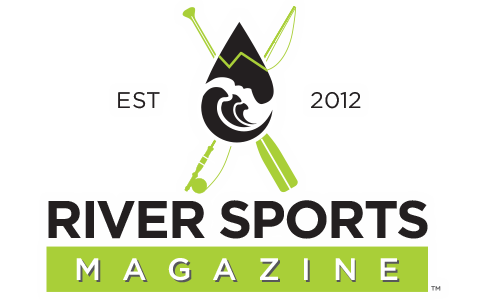
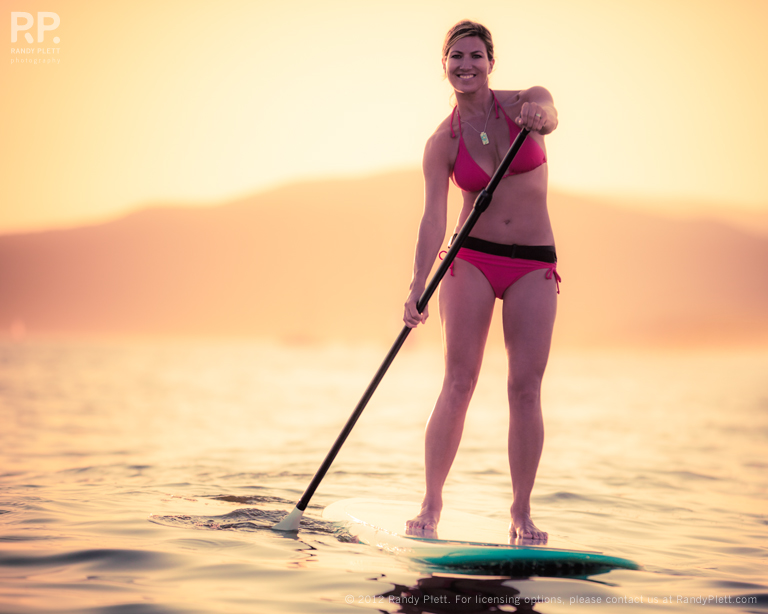
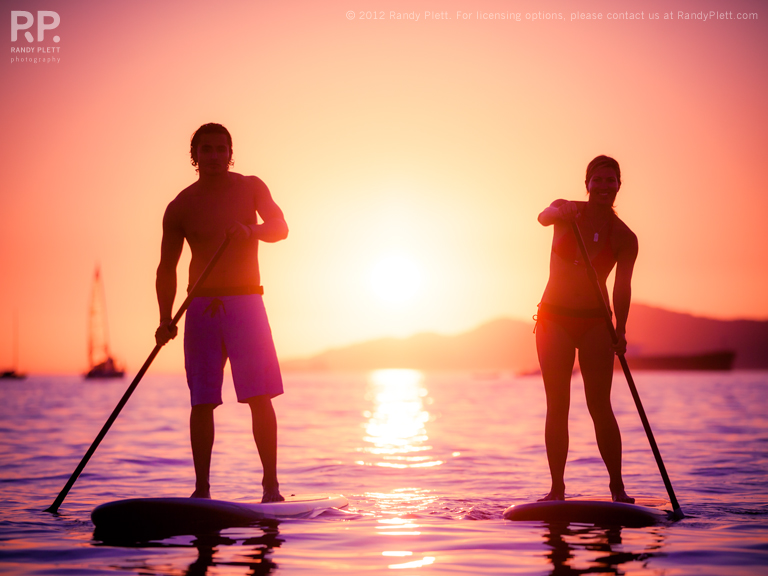
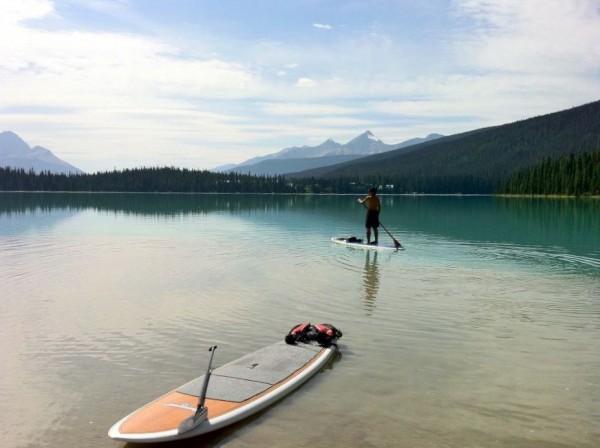
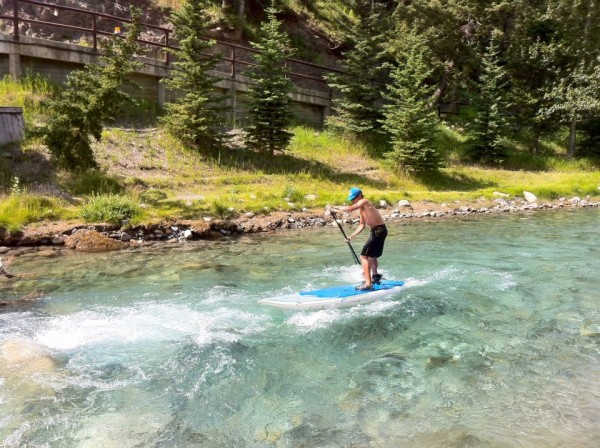
Follow us for the latest news!